14 Types of Wire Fencing Perfect for Your Yard or Field
Author: Omar Alonso | Editor: Omar Alonso
Review & Research: Jen Worst & Chris Miller

While types of wire fencing are often associated with ranches and suburban houses, you will find that there are a lot of fencing options that can help with everyday requirements like keeping your pets safe.
Wire fencing is one of the more popular and frequently used types of fencing because of the many ways in which it can be put to good use. Depending on the construction, the material used and the coating on them, there are about a dozen varieties of wire fences.
From restricting livestock on a ranch to inmates in a prison, wire fencing has a ton of applications, especially over a living fence. Basically, this is a good way to keep unwanted elements like rabbits and other small animals or intruders out.
14 Types of Wire Fencing
Let’s start with the types of construction. There are four main types of wire fencing based on the way it is built and used. This is a very important factor to consider when choosing wire fencing.
Welded Wire Fencing
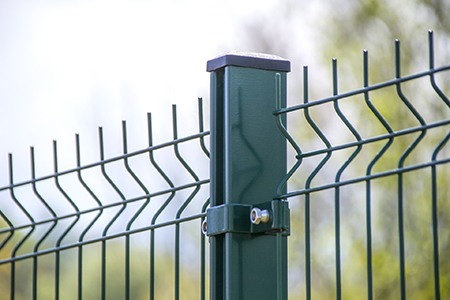
This type of fencing is usually constructed by placing wires in a way that they form squares or rectangles. After that, they are attached to each other using a technique called spot welding.
This creates strong sheets of fencing that are more flexible than woven techniques which are more traditional.
Because of the way it is made, welded wire fencing can be used in a lot more ways in decorations, especially when compared to woven wire. However, it is quite strong. So depending on the situation, it can be put to good use in both residential and commercial environments.
For example, it can be used as a perimeter fence around properties or pools. It can also be used along walkways in nature reserves and parks. Welded wire is also put to good use in prisons and military installations.
We have all seen them in movies. These types of wire fencing is also used to contain animals in a kennel. Apart from that, welded wire fences are regularly found around gardens and ranch gates.
Straining Line Wire
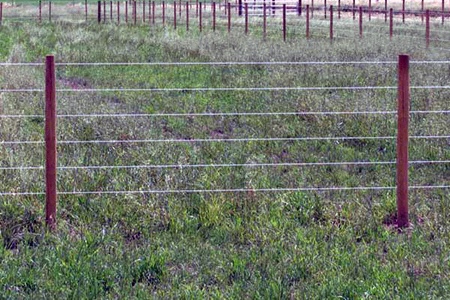
Most people describe straining line wire as barbed wire without the barbs. It's long lengths of steel wire that isn't already formed into fencing like chicken wire, for instance. People will run these between posts to make rudimentary fences.
But really, they're meant to be used along the top of fence posts at high tension to make sure all of the posts are supporting each other from tipping, at least in those two side-to-side directions.
Chicken Wire
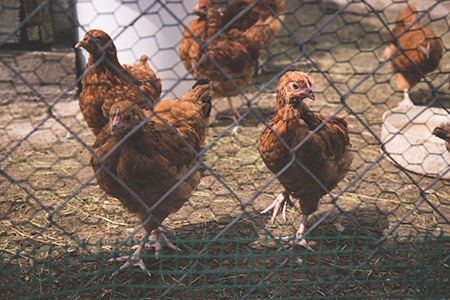
Also called wire netting, chicken wire was obviously designed for keeping chickens within a pen, but it's a very versatile option that can work for pets, keeping larger animals out of your backyard farming operation, etc.
The design are hexagonal holes, created by twisting and sealing the wires together by machine before the entire fencing is rolled up in bundles and sold by the foot in length. This is probably the easiest wire fencing types to install, by far.
Barbed Wire Fencing
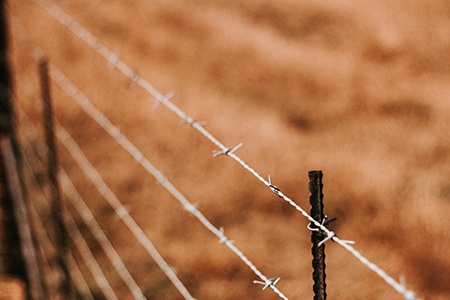
This one is made of steel and it is typically used to keep cattle in their place. If you have never seen one, you have an interesting life. But also, it is a set of twisted wires where the strands are twined together. That is also how various types of barbed wire fencing differs from a traditional woven wire.
Barbs are formed at regular intervals which is where they get their name from. These barbs are pointy and minted to hurt anyone who tries to break through without using any special skill. The pain caused by the pointy barbs is meant to serve as a deterrent and oftentimes, it does.
Typically, barbed wire fences are used as separating boundaries between large properties like ranches. They are also used to contain cattle.
When used to contain prisoners, barbed wire is used in combination with some other form of fencing. It is also known to be effective in protecting gardens and crops from pests. Unsurprisingly, barbed wire fencing also has some military applications.
Barbed wires are generally installed from one post to another. These posts are usually made of wood. It is as popular as it is among farmers and homesteaders because it is extremely easy to install. All you need is a basic staple gun and some heavy-duty gloves.
Start by stapling the wire to the first post and pull it tight before you do the same with the next post. You can choose between single and multiple strands of wire or combine it with wood rails or chain link to increase the strength of your fencing. This also discourages unwanted elements from climbing over.
Those who are serious about keeping human beings (perhaps intruders) out actually like to use razor wire because it causes cuts and injuries immediately after coming into contact with the skin, not unlike a razor.
Woven Wire Fencing
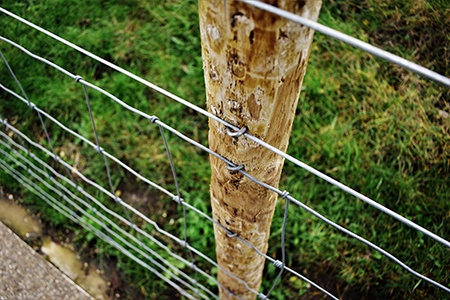
This one is constructed by producing two weaving pieces of wire. Chain link is a popular example. Woven wire fencing is more traditional and it is a loose structure. It's like a wattle fence but made out of metal.
It bends and stretches really well which shows that it has a lot of flexibility. Since the strands are woven together if you want to break it up, all you need to do is cut one strand and the whole thing will fall apart.
Woven types of wire fencing are usually put to use in containing pets in kennels and generally on dog runs. It is also used as a perimeter in yards but you see the flaw in the logic there. Take one strand out and all your effort is for nothing.
Now, chain link, one of the more popular forms of woven fencing is a decorative application. You are likely to find it in commercial areas and playgrounds alike. This kind of woven wire fence is strung together by using something called a fence stretcher.
That means you will be spending a precious penny from your pocket. You could skip the fence stretcher but that will make the fence sag. Neither will it look good nor will it function well.
Aluminum Wire Fencing

Then there are different types of fencing depending on the materials used. These, as the name indicates, are made of aluminum and are preferred by those who want to keep it lightweight and weather resistant.
Aluminum wire fencing can protect itself from rain and moisture damage. It is also a good conductor of electricity and can be used in the making of electric fencing.
Steel Wire Fencing
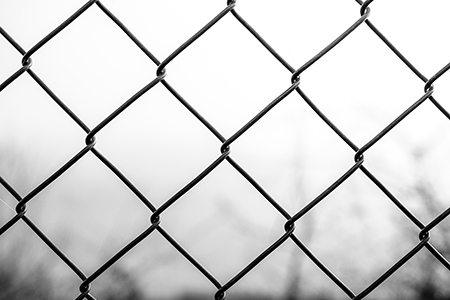
Steel is used in the making of wire fencing because it is heavy and durable. While it can be expensive in the beginning, it is still considered a pretty good investment. Steel is resistant to corrosion and is good for saltwater applications too.
But one of the best things about stainless steel is that it requires no galvanization and that is why it lasts longer than other products that have been through the process before they are weld or woven.
This is quite literally one tough cookie. Well, except for the cookie part. There are fence alternatives but opting for steel wire, if you don't mind the look, is the way to go.
Electrified Fencing
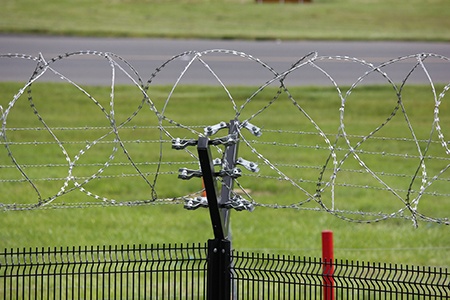
You must be more familiar with electrified fencing. These are the ones we saw in Steven Spielberg’s masterpiece Jurassic Park. Remember when the T-Rex comes out of the 10,000-volt fencing because someone switched off the main? That is the one.
Electrified fencing is typically used in commercial and industrial spaces and is meant to give a shock to anyone who touches these wire fence types.
It is meant to keep trespassers and intruders out and is made of thin steel or aluminum. These are also used for agricultural purposes to make trespassers uncomfortable.
When used in a military-grade fence, these fences can be lethal. But they are no longer used outside prisons and military complexes anymore. Typical electric fences put out 8,000 volts, which is a lot, but with a low 120 milliamps, which won't even harm a squirrel.
When they are, there is another barricade in front of it so that there are no accidents. They might also be placed on top of high walls which is another way of preventing accidents.
That is why a lot of them are used in agriculture to keep cattle and poultry contained. They are also used at airports to keep the animals from reaching the runway.
Some parks (not Jurassic) also place electrified fencing to keep wildfowl away from people. In Kenya, they are used to keep elephants from destroying crops.
If you are going for this one, professional installation is highly recommended for these types of wire fencing.
Galvanized Before
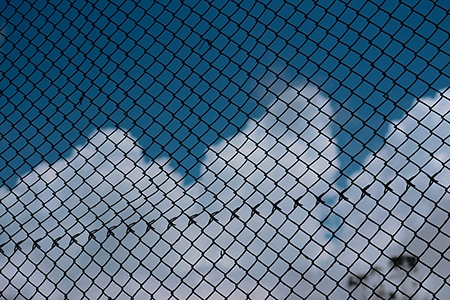
Speaking of galvanized wires, when a material is put through that process before it is weld or woven, it gets a protective coating of zinc. This way, it is more resistant to rust and the damage caused by it.
Once a wire is galvanized before the weaving or welding, it is referred to as GBW or galvanized before weave/weld. But when it is welded, some of the galvanized parts burn away and create small parts where water and moisture can sneak in.
Galvanized After
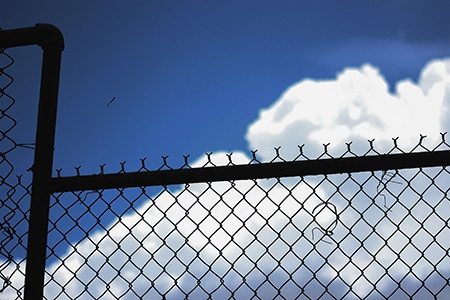
This is the other way of doing things. This is a lot more indestructible and hence, it might also cost more. But it does reduce the chances of repair over time, saving you some money.
These wires are referred to as GAW wires or galvanized after weave/weld. They are dipped into zinc after galvanization, making sure the whole thing is secure.
These wire fencings are more durable for outdoor purposes where they experience harsher weather conditions. You can look at our fence ideas to understand how to decorate them to look more appealing while maintaining the built-in durability of steel.
Powder Coated Wire Fencing
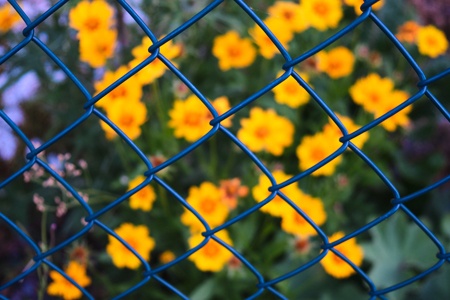
A powder coat is similar to a vinyl coat but it's less thick. It's not meant to protect people from the fence, but to protect the fence from moisture, UV rays, rust, and other types of corrosion.
E-Coated Wire Fencing
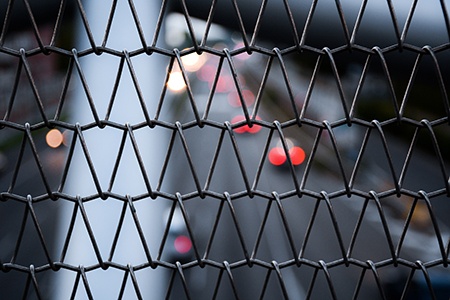
E-coating is the colloquial term for electroplating, which is a process of dipping the wire into a type of paint that then has electricity passed through it. This electric charge causes a chemical reaction that causes the e-coating to become stronger.
Before the e-coating is applied, the wire is likely galvanized as well. All of this serves to defend against corrosion. There's different types of wire fencing of this style, too. This is all about the coating.
Rust will destroy your fence before anything else usually, and this will delay that for a long time. These are very durable types of wire fences if you hate on-going maintenance.
Poly Wire Fencing
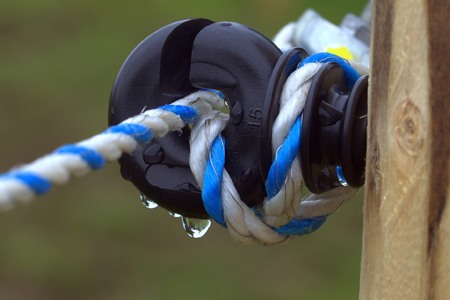
This one is used when an electrified fence is being constructed and the maker wants to make sure there is enough visibility. Its strands are very brightly colored and that is why it works.
These strands are twisted along with conductive wires and are electrified at a later stage. Like stainless steel, these wires are also very good at resisting corrosion which makes them an excellent choice when used to contain livestock.
It also does not cause heavy injuries to an animal that might have gotten entangled. So, that is another benefit of poly wire fencing.
Vinyl Coated Wire Fencing
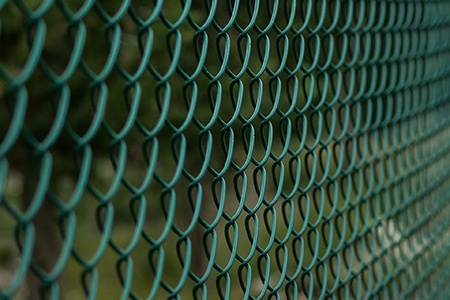
You find vinyl coating on wire fences often at elementary schools where the idea is to provide a bit of a softer and smoother surface that avoids snagging and scratching. Usually they'll be coated in green or black, though there are other rare colors available.
These fences last for quite some time since the fence material itself is galvanized before being coated with vinyl. You'll see them at schools, playgrounds, public pools, and other places that contain children and pets.
Types of Wire Fencing for Every Enclosure
There are many different types of wire fencing and you can do a lot to make them more effective. Bottom line is that whether yours is a rural, suburban, or urban setup, the above-mentioned types of wire fencing can be put to good use and be extremely useful.



